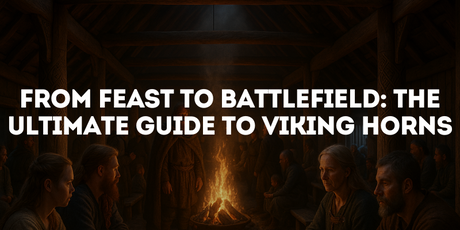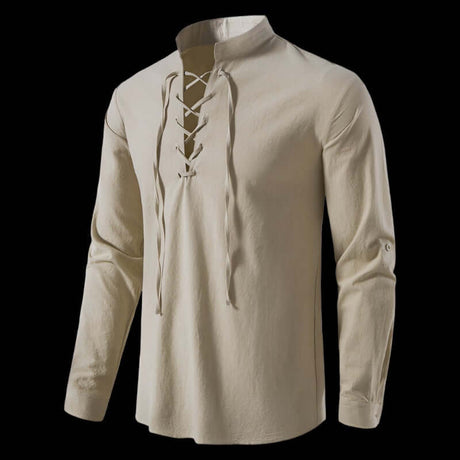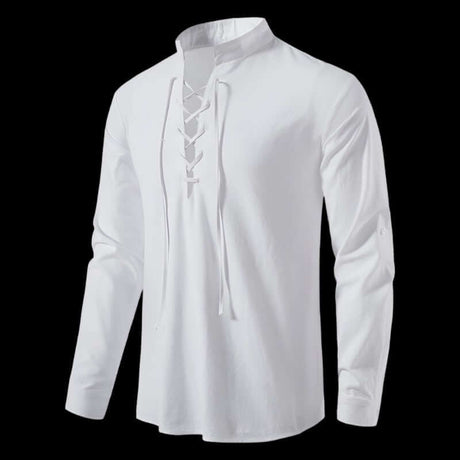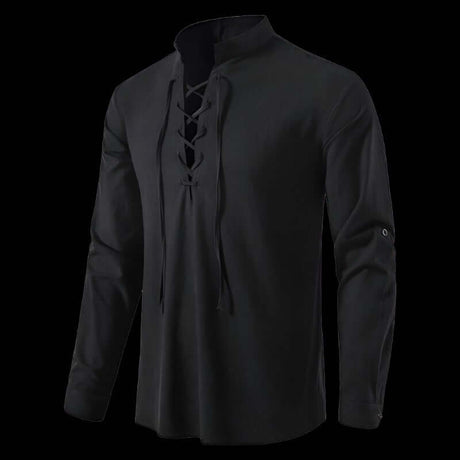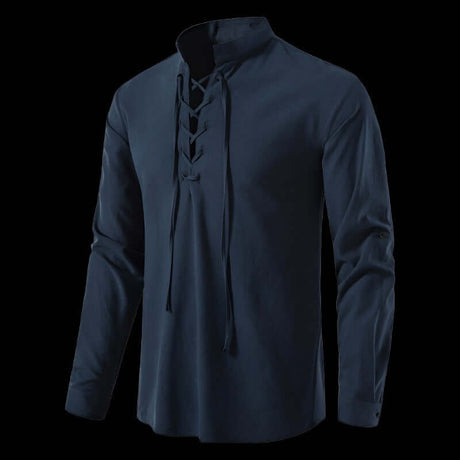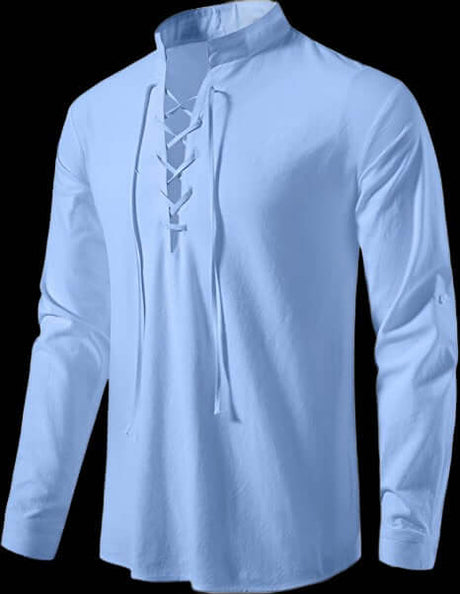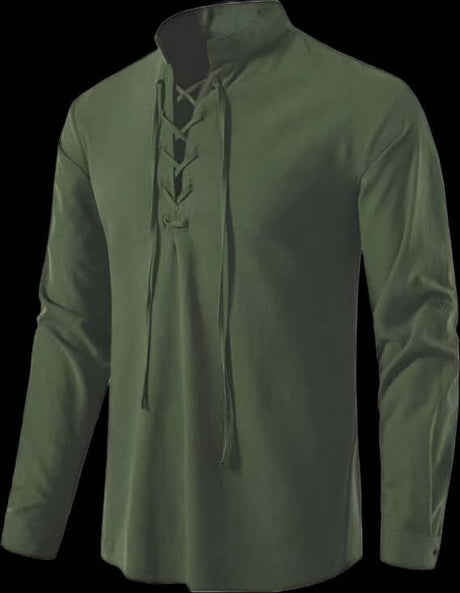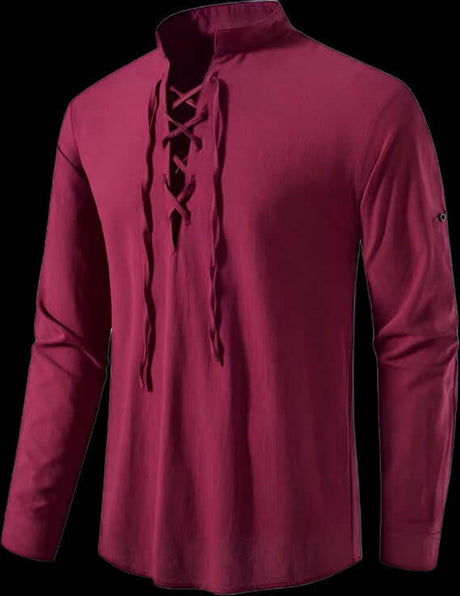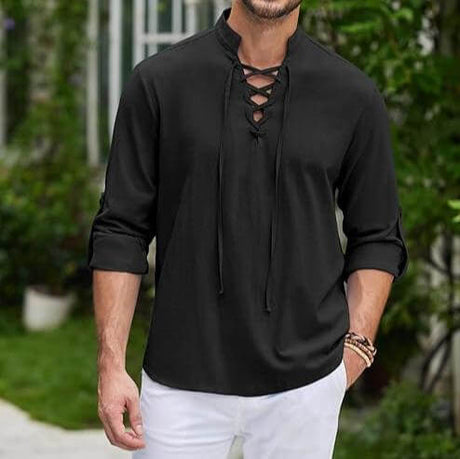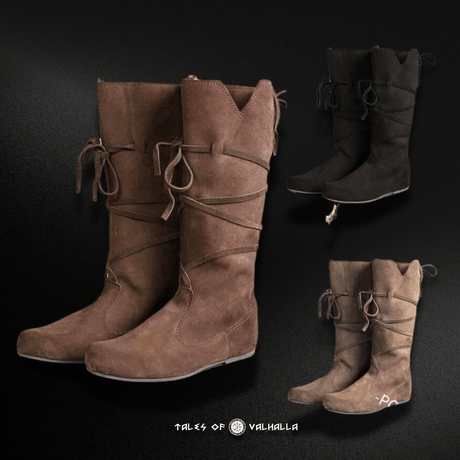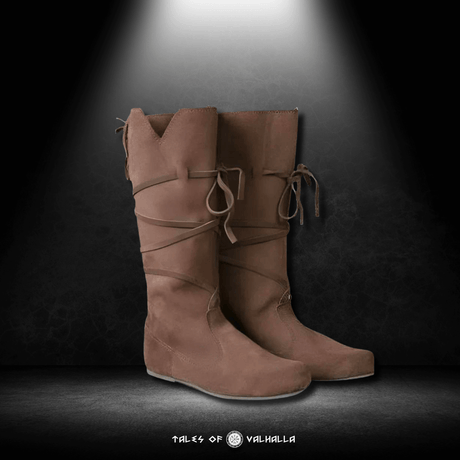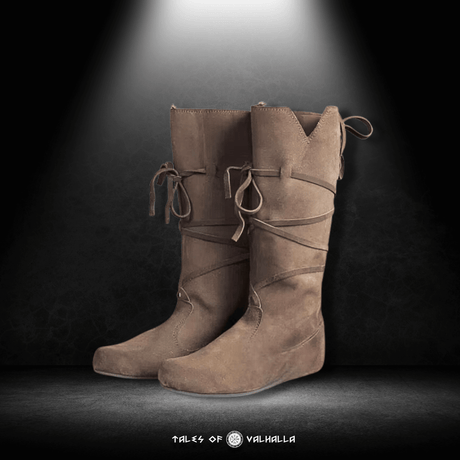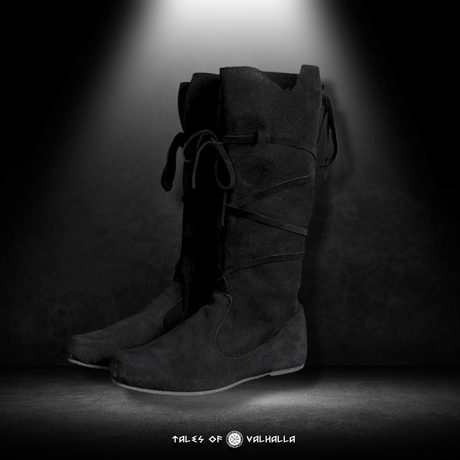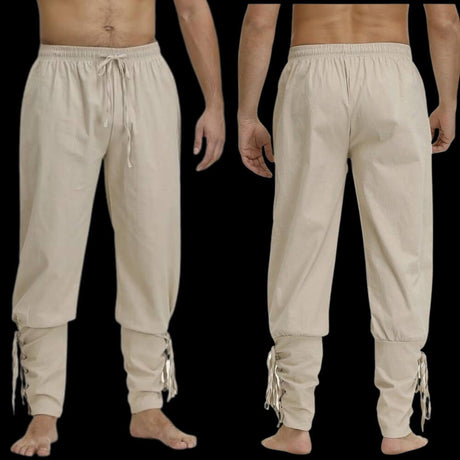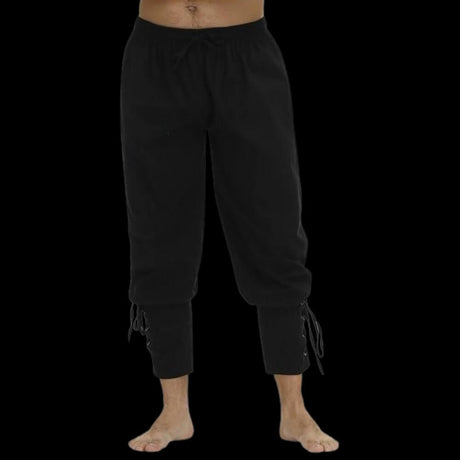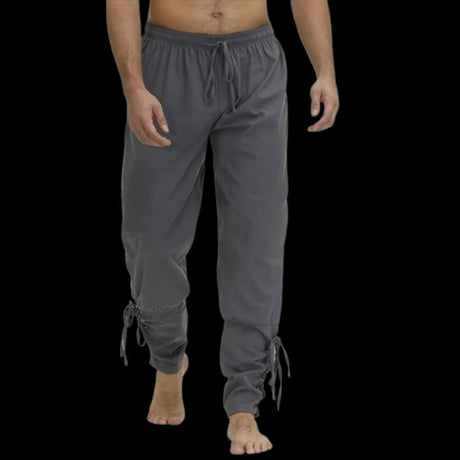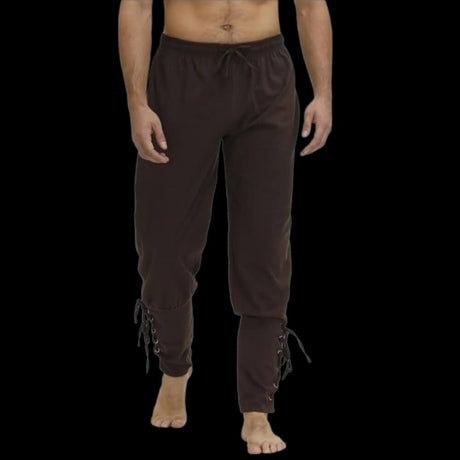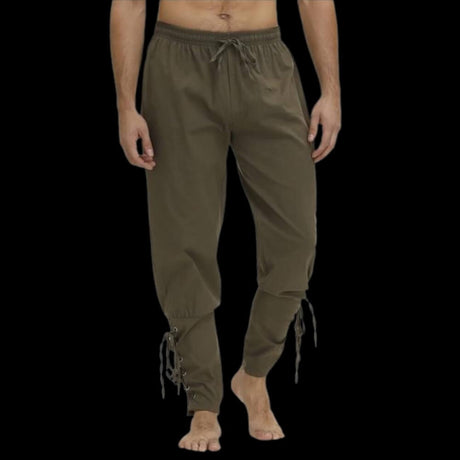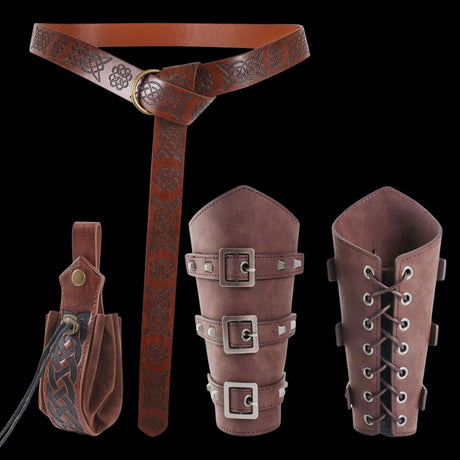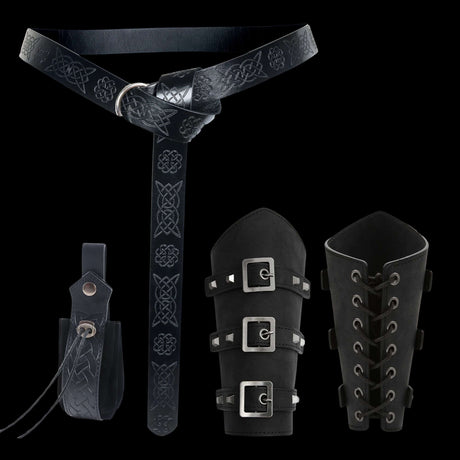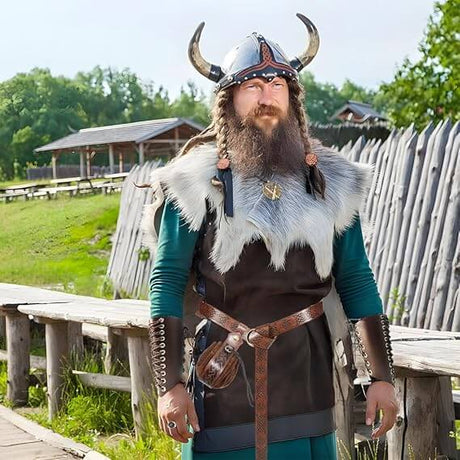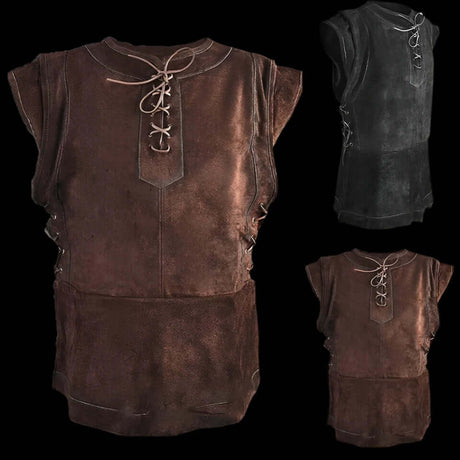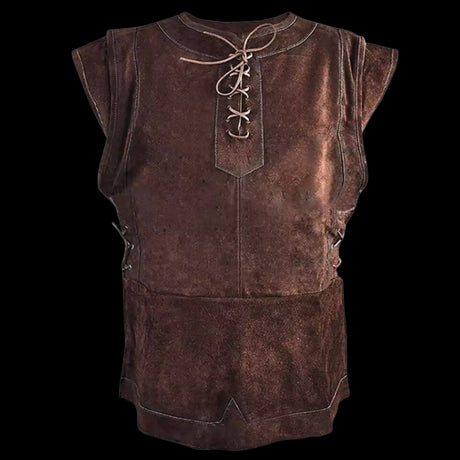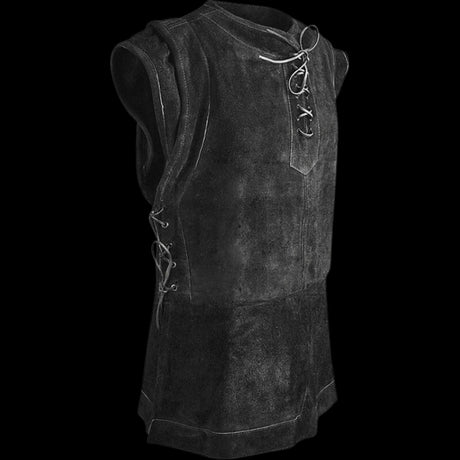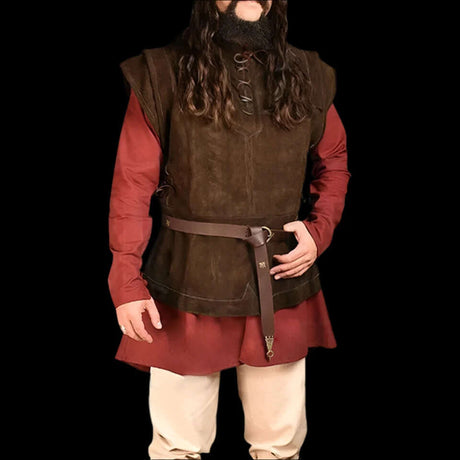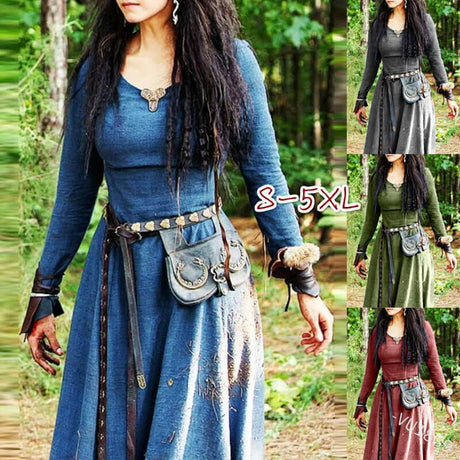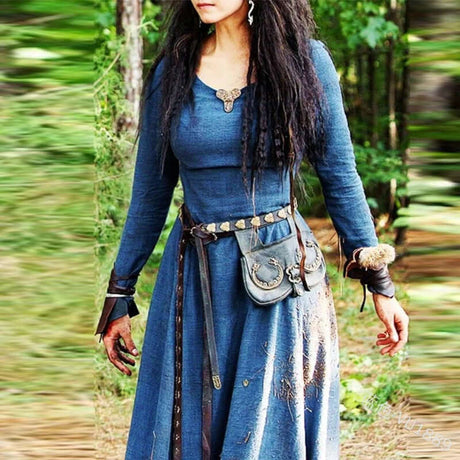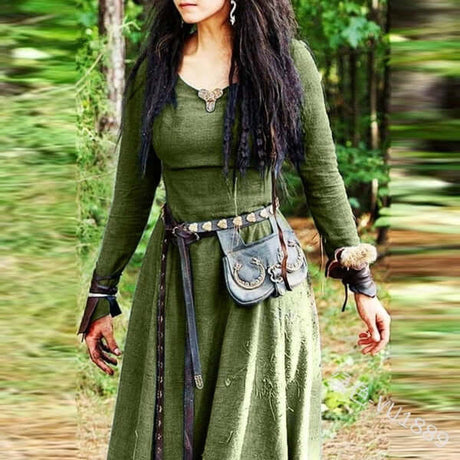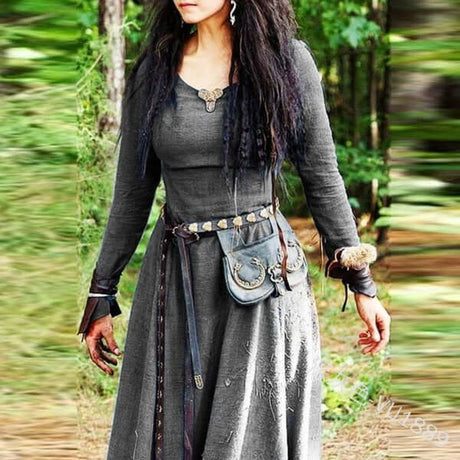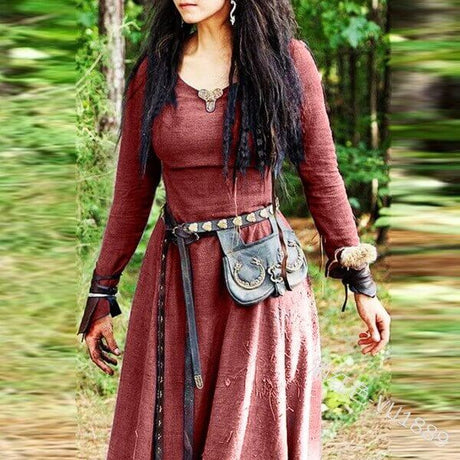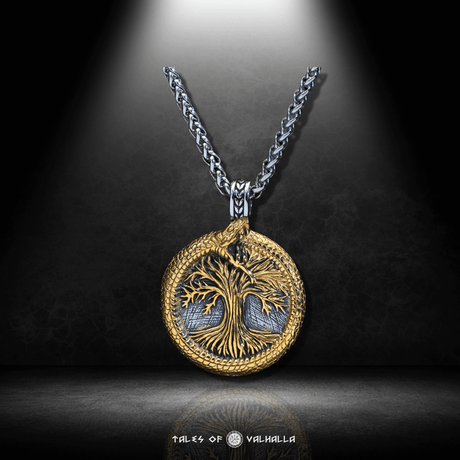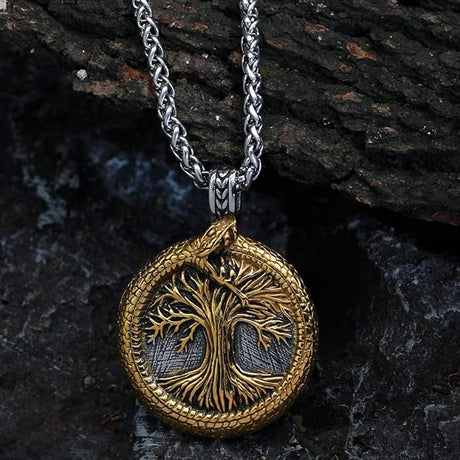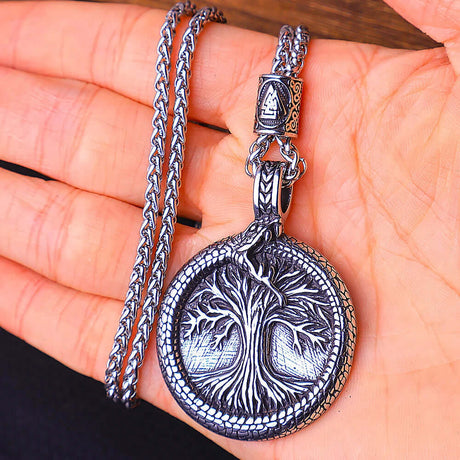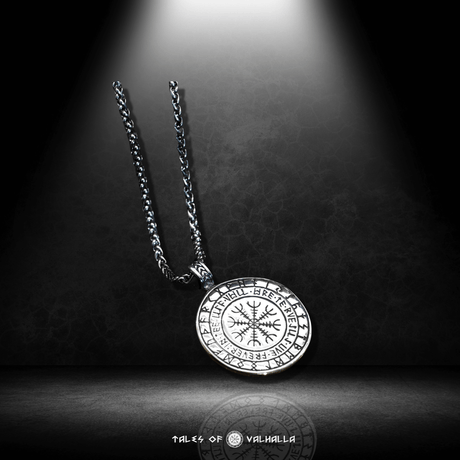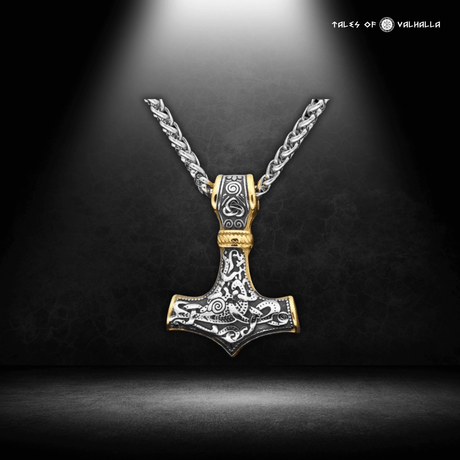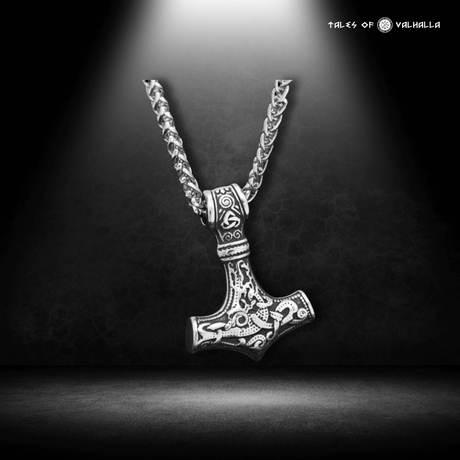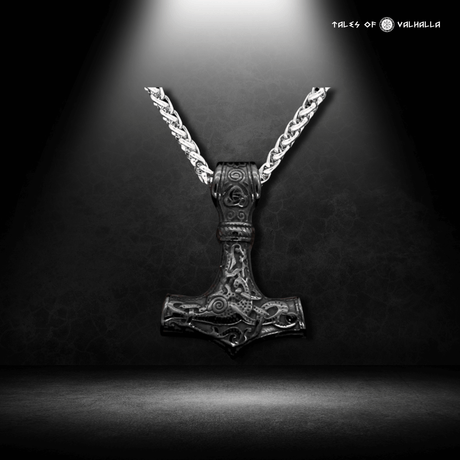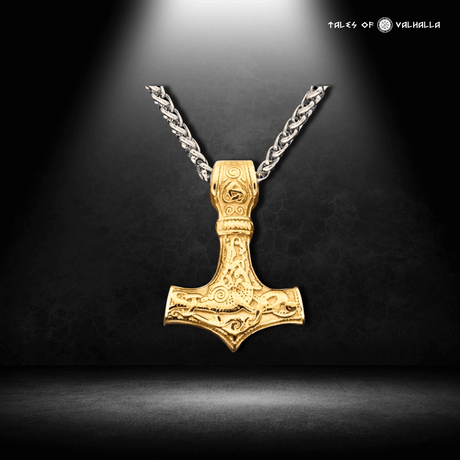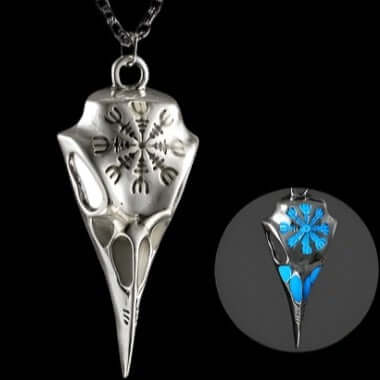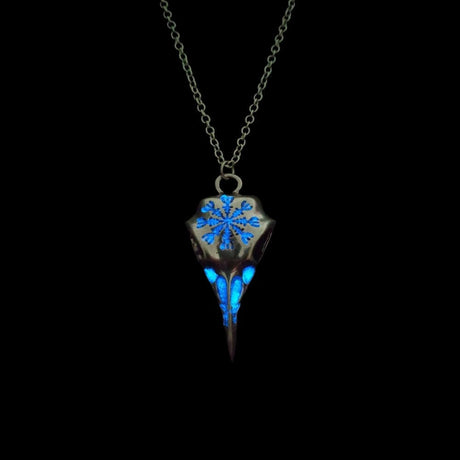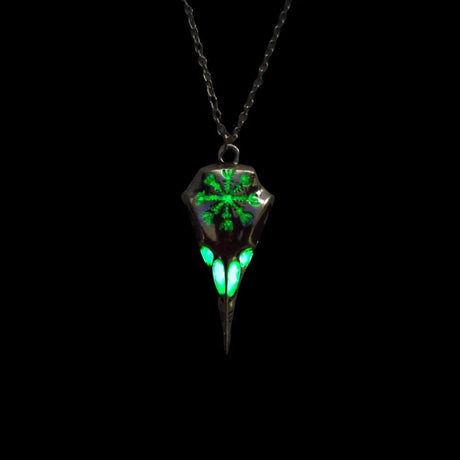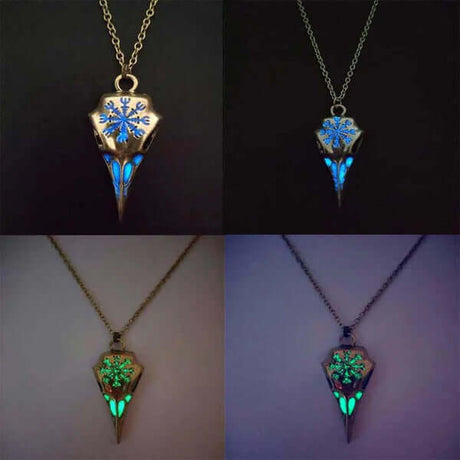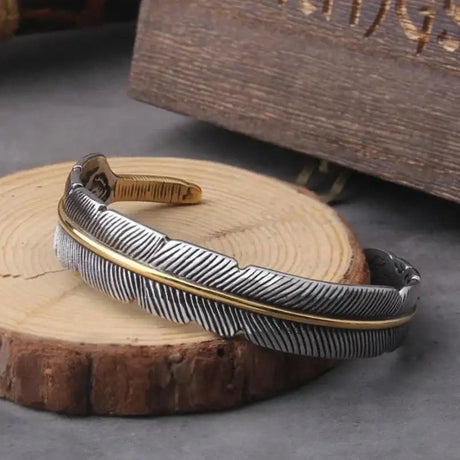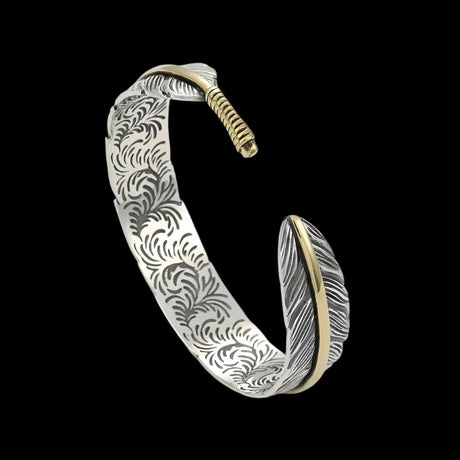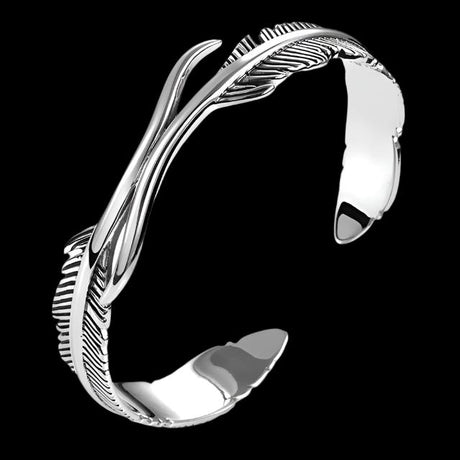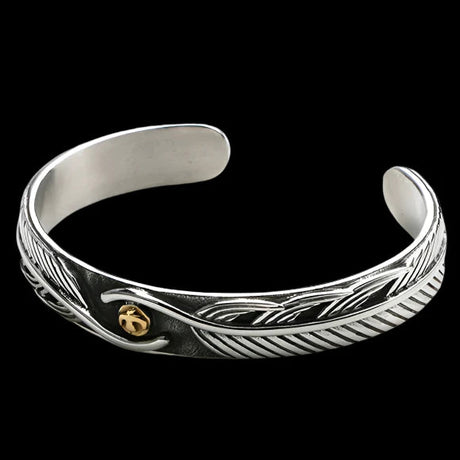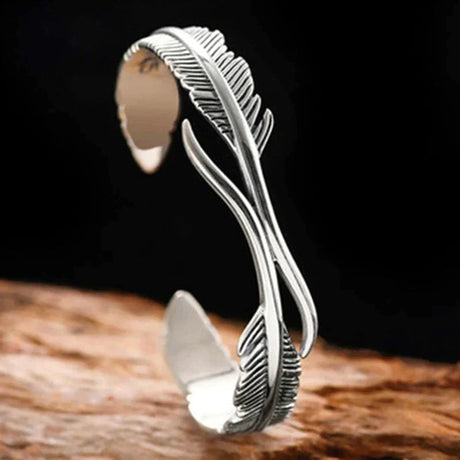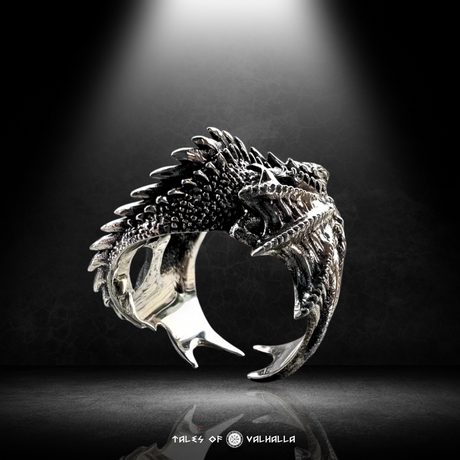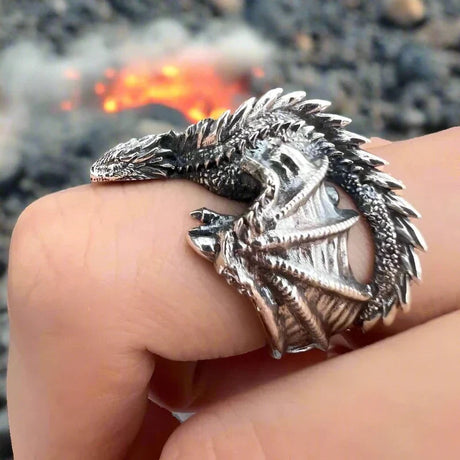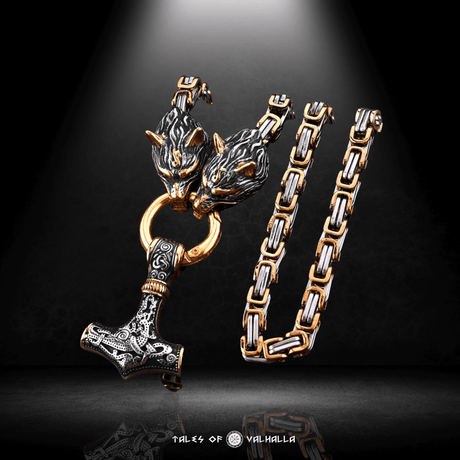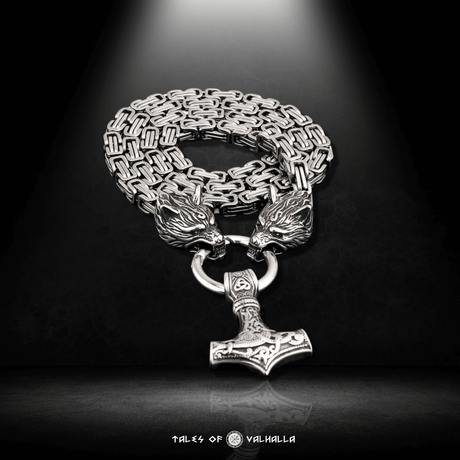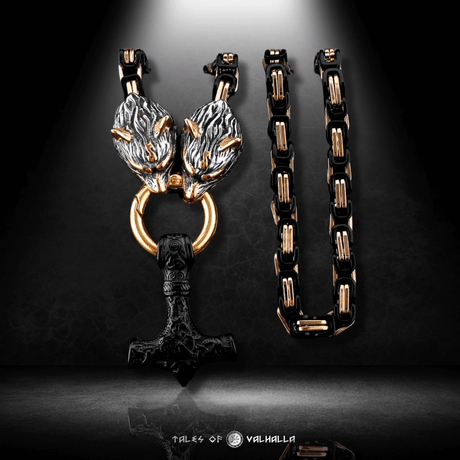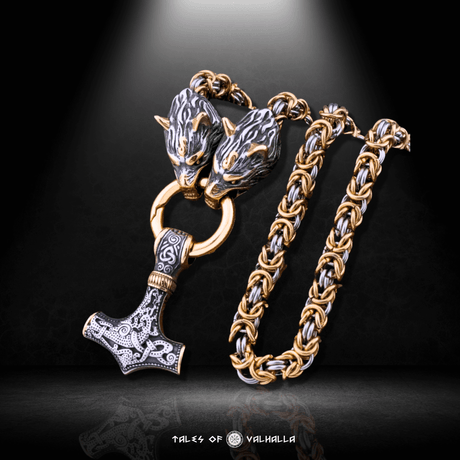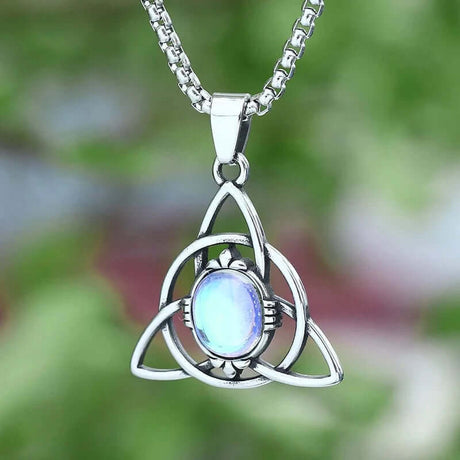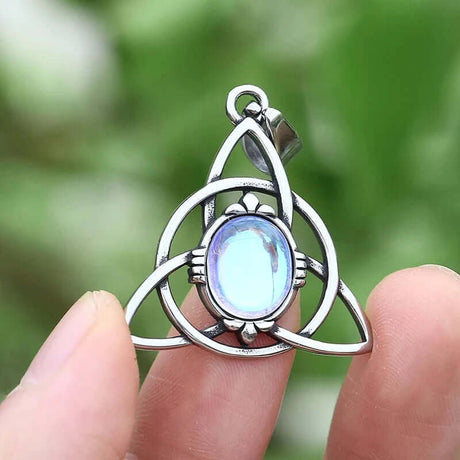Before we dive into modern designs, it's crucial to address the historical reality. The heavily tattooed Viking, as seen in shows like Vikings, is a blend of fact and fiction. Our most compelling clue comes from the 10th-century Arab diplomat Ahmad Ibn Fadlan, who described the Rus' (likely Swedish Vikings) he met as being covered from their "fingernails to neck" with dark, tree-like patterns.
While we lack preserved Viking skin to confirm the exact look of these markings, this account, combined with the Vikings' love for intricate art on their weapons, ships, and jewelry, makes it highly plausible that tattooing was a part of their culture. Today's Viking tattoos are modern interpretations, translating the powerful art found on ancient stones and artifacts onto the living canvas of skin.
Why We're Drawn to Viking Tattoos: The Modern Appeal
The fascination with Viking tattoos in the 21st century stems from a desire to connect with powerful archetypes. They represent:
- Strength & Resilience: A symbol of the inner warrior, the ability to overcome adversity.
- Heritage & Ancestry: A way for those with Scandinavian roots to honor their lineage.
- Mythology & Art: A deep appreciation for the epic stories and unique artistic style of the Norse.
- Individuality: A statement of personal values, moving beyond fleeting trends to embrace something with historical weight and meaning.

Why We're Drawn to Viking Tattoos: The Modern Appeal
Symbols of Power & Protection: Tattoos for the Warrior Spirit
These Viking tattoos are for those who wish to carry a symbol of strength, courage, and divine protection. They are emblems of the warrior's path.
1. Mjölnir (Thor's Hammer)
- Meaning: The ultimate symbol of strength, protection, and consecration. Mjölnir was the mighty hammer of Thor, God of Thunder, capable of leveling mountains. As a tattoo, it is a powerful talisman to ward off evil and invoke Thor's protective might.
- Design: Can be depicted simply or ornately, often interwoven with knotwork or lightning.
2. The Helm of Awe (Aegishjalmur)
- Meaning: An Icelandic magical stave consisting of eight armed "tridents" radiating from a central point. It was believed to grant invincibility and to instill overwhelming fear in one's enemies. This is a potent symbol of protection and psychological dominance.
- Design: Geometric and striking, perfect for a focal point on the chest or shoulder.
3. Gungnir (Odin's Spear)
- Meaning: Gungnir was a magical spear that always hit its target and was a symbol of Odin's power. A Gungnir tattoo represents precision, purpose, determination, and a connection to the Allfather himself.
- Design: Often depicted as a simple spearhead, sometimes with runes carved on it.
4. The Viking Axe
- Meaning: The axe was the common weapon of the Viking warrior, a symbol of strength, courage, and practicality. An axe tattoo represents the warrior spirit, the ability to cut through obstacles, and a connection to the everyday life of the Norseman.
- Design: Can be a single bearded axe or two crossed axes, often with a shield.
5. The Bear
- Meaning: The bear symbolizes immense strength, courage, and the ferocity of a warrior. It is linked to the legendary berserkers, warriors who fought in a trance-like fury. A bear tattoo is an emblem of raw, untamed power.
- Design: Can be a realistic bear head or a stylized bear in the Norse art style.
Story Vignette 1: The Mark of the Protector Imagine a Viking warrior, Erik, before his first major battle. He sits as a wise woman carefully hand-pokes a design onto his chest using a sharp bone needle and soot-based ink. The design is the Helm of Awe. It is not just a decoration; it is a ritual, a piece of Viking magic to fortify his spirit. He believes this symbol will grant him the courage to stand firm in the shield wall and make his enemies' hearts quail before him. This Viking tattoo is his spiritual armor.
See more: Decoding Norse Symbols: The Hidden Meanings Behind Viking Tattoos
Wisdom, Mystery & Magic: Tattoos for the Seeker
These designs are for those who value knowledge, intuition, and the mystical aspects of the Norse worldview.
6. Odin, the Allfather
- Meaning: A tattoo of Odin represents a quest for wisdom, sacrifice for knowledge, leadership, and a connection to magic, poetry, and war. He is a complex and powerful figure.
- Design: Often depicted with one eye (having sacrificed the other for wisdom), with his ravens, or as a cloaked wanderer.
7. The Ravens (Huginn & Muninn)
- Meaning: Odin's two ravens, Huginn (Thought) and Muninn (Memory), flew across the worlds to bring him information. A raven tattoo symbolizes wisdom, knowledge, insight, memory, and the divine messenger.
- Design: Often depicted as a pair, perhaps perched on the shoulders or flying.
8. Runes (General)
- Meaning: Runes were the Viking alphabet, but each character also held symbolic and magical meaning. A runic tattoo can be a powerful and deeply personal statement. The choice of the rune is paramount.
- Design: A single rune can be a minimalist yet potent tattoo. A series of runes can spell a name or a meaningful phrase.
9. A Bindrune
- Meaning: A bindrune is a custom sigil created by combining two or more runes. Its meaning is highly personal, created by the wearer to represent a specific intention, goal, or set of powers they wish to invoke. It is one of the most personalized Viking tattoos one can get.
- Design: A unique, stylized symbol crafted from overlapping runic shapes.
10. The Völva (Seeress)
- Meaning: The Völva was a powerful female shaman in Norse society, capable of seeing the future and performing magic (seidr). A tattoo depicting a Völva or her staff represents a connection to feminine power, intuition, prophecy, and the mystical arts.
- Design: Often a stylized woman with a staff, perhaps shrouded in mystery.
Cosmic & Natural Order: Tattoos of the Nine Worlds
These Viking tattoos connect the wearer to the grand cosmology of the Norse and their deep reverence for nature.

Cosmic & Natural Order: Tattoos of the Nine Worlds
11. Yggdrasil (The World Tree)
- Meaning: The colossal ash tree that connects the Nine Worlds. Yggdrasil is a profound symbol of the cosmos, interconnectedness, life, death, rebirth, and wisdom. It is the very axis of existence in Norse mythology.
- Design: An intricate tree, its roots deep and branches high. Often a large, detailed piece for a back or sleeve.
12. The Serpent/Dragon (Jörmungandr, Níðhöggr, Fafnir)
- Meaning: Dragons and serpents are powerful figures representing chaos, destruction, primal force, and the cyclical nature of time. A tattoo of Jörmungandr (the World Serpent) encircling an arm can symbolize the inescapable nature of fate.
- Design: Can be a coiled serpent, a fearsome dragon head, or a full beast in the Norse art style.
13. The Wolf (Fenrir, Geri & Freki)
- Meaning: Wolves hold a dual symbolism. They can represent chaos and destruction (the monstrous Fenrir, destined to kill Odin), but also ferocity, loyalty, and strength (Odin's companions, Geri and Freki).
- Design: The meaning depends heavily on the depiction – a bound wolf for control over chaos, or a howling wolf for wild freedom.
14. The Sun & Moon (Sól & Máni)
- Meaning: Sól (Sun) and Máni (Moon) were the divine siblings who drove their chariots across the sky, creating day and night. They are pursued by the wolves Sköll and Hati. A tattoo of them symbolizes the cycles of time, light and dark, and the cosmic chase.
- Design: Often depicted as a pair, sometimes with the pursuing wolves.
15. The Stag of Yggdrasil (Eikthyrnir)
- Meaning: Eikthyrnir is a stag that stands atop Valhalla, chewing on the leaves of Yggdrasil. From his antlers drip the waters that form all the rivers of the world. He symbolizes life, nourishment, and the source of earthly waters.
- Design: A stag with large, water-dripping antlers, often shown on the World Tree.
Story Vignette 2: Sarah's Yggdrasil Sarah, a biologist in California, felt a profound connection to the idea of interconnected ecosystems. For her first major tattoo, she chose a full back piece of Yggdrasil. She worked with her artist to create a design where the roots morphed into DNA strands and the branches into the phylogenetic tree of life. It was a modern interpretation of an ancient symbol. For Sarah, her Viking tattoo wasn't just about Norse mythology; it was a celebration of science, life's unity, and the deep, ancient roots from which all living things spring. It was her personal World Tree.
Fate, Destiny & the Afterlife: Tattoos of Inescapable Truths
These Viking tattoos deal with the core Norse concepts of fate, death, and the warrior's journey.

Fate, Destiny & the Afterlife: Tattoos of Inescapable Truths
16. The Valknut
- Meaning: A symbol of three interlocking triangles, deeply associated with Odin and the afterlife. It is often called the "knot of the slain," believed to mark a warrior who has dedicated their life to Odin, destined for Valhalla. A Valknut tattoo is a powerful statement of commitment and acceptance of a warrior's fate.
- Caution: It's important to be aware that this symbol has been co-opted by some modern hate groups. Research thoroughly and understand its true historical context.
17. The Web of Wyrd (Skuld's Net)
- Meaning: A symbol made of nine intersecting lines, representing the Norse concept of fate (wyrd). It contains all the shapes of the runes and symbolizes that the past, present, and future are all interconnected and inescapable.
- Design: A powerful, geometric symbol of destiny.
18. The Valkyrie
- Meaning: The "choosers of the slain," these female warrior spirits served Odin, selecting the bravest fallen heroes for Valhalla. A Valkyrie tattoo symbolizes courage, a warrior's spirit (especially for women), and the connection between battle and a glorious afterlife.
- Design: Often depicted as a fierce woman in armor, sometimes with wings or on horseback. A very popular choice for Viking tattoos for women.
19. The Longship
- Meaning: The Viking longship was the key to their expansion and a symbol of adventure, exploration, and the journey of life. As vessels for Viking funerals, they also symbolize the final journey into the afterlife.
- Design: A sleek dragon-prowed ship, often on stormy seas.
Unique & Lesser-Known Designs for Your Viking Tattoo
Looking for something beyond the most common symbols? These offer unique alternatives.
20. Sleipnir (Odin's Steed)
-
Meaning: Odin's eight-legged horse, the fastest of all horses, capable of traveling between the Nine Worlds. A Sleipnir tattoo symbolizes speed, endurance, a shamanic journey, and a safe passage between realms.
21. The Triskele / Triple Horn of Odin
-
Meaning: Three interlocking drinking horns, representing Odin and the Mead of Poetry. It symbolizes wisdom, poetic inspiration, and eloquence.
22. The Boar (Gullinbursti)
-
Meaning: The golden-bristled boar of the god Freyr, a symbol of fertility, protection, and prosperity.
23. The Troll Cross
- Meaning: A symbol of protection against trolls and other malevolent entities.
- Origin Note: This is a piece of modern Swedish folklore, not a historically documented Viking Age symbol, but it's very popular in the modern Norse-inspired aesthetic.
24. Intricate Knotwork Patterns
-
Meaning: While not a single symbol, the Viking art style of knotwork itself represents eternity and interconnectedness. A tattoo of a pure knotwork band is a beautiful and authentic choice.
25. The Vegvisir (The Runic Compass)
- Meaning: An Icelandic magical stave said to ensure the bearer will not lose their way. It's a powerful symbol of guidance and finding one's path.
- Origin Note: Like the Troll Cross, this is a post-Viking symbol from a 17th-century manuscript. Its popularity in modern Viking tattoos is immense due to its powerful meaning and Norse aesthetic.
Summary Table of Viking Tattoo Ideas
Your Quest: Finding the Right Artist for Your Viking Tattoo
Choosing the right artist is as important as choosing the right design.
- Research Portfolios: Look for artists who specialize in blackwork, illustrative, or Norse/Celtic styles. Their portfolio should show clean lines and a good understanding of the aesthetic.
- Consultation is Key: Have a thorough discussion with your chosen artist. Explain the meaning you want to convey. A good artist can help you refine your idea and create a custom piece.
- Be Responsible: A responsible artist will also be aware of symbols that have been co-opted by hate groups and can help you navigate these sensitive issues.
Conclusion: Inking Your Personal Saga
Viking tattoos are a powerful bridge between the ancient past and modern self-expression, a way to carry the stories, symbols, and spirit of the Norse people with you. From the protective might of Mjölnir to the intricate mysteries of knotwork and the personal power of a bindrune, each design offers a unique way to connect with a legacy of strength, resilience, and artistry.
The journey "From Runes to Ink" is a personal one, requiring research, respect for the source culture, and collaboration with a skilled artist. For those ready to explore the authentic lore and find inspiration for their own saga, websites like tales of valhalla are an excellent resource. Ultimately, a well-chosen Viking tattoo is more than just body art; it’s a piece of your saga written on your skin, an echo of history, and a powerful symbol of your own story.
6 FAQs About Viking Tattoos
-
Q: Did Vikings actually have tattoos? A: While we lack preserved skin as definitive proof, historical evidence strongly suggests they did. The 10th-century Arab diplomat Ibn Fadlan described the Rus' (likely Vikings) as being covered in dark, tree-like patterns from "fingernails to neck." Given their love for intricate art on all other mediums, it's highly plausible that modern Viking Tattoos are inspired by a real historical practice.
-
Q: What are some popular Viking tattoo symbols and their basic meanings? A: Some of the most popular symbols for Viking Tattoos include:
-
Mjölnir (Thor's Hammer): Represents strength, protection, and courage.
-
Valknut: Associated with Odin, sacrifice, and the afterlife for warriors.
-
Ravens (Huginn & Muninn): Symbolize wisdom, thought, and memory.
-
Yggdrasil (The World Tree): Represents interconnectedness, life, and the cosmos.
-
Runes: Each has individual meanings related to concepts like victory, protection, or heritage.
-
-
Q: Are all popular "Viking" tattoos, like the Vegvisir (Viking Compass), actually from the Viking Age? A: No, and this is a key distinction. Some of the most popular symbols, including the Vegvisir and the Helm of Awe (Aegishjalmur), are not historically from the Viking Age. They first appear in later Icelandic magical manuscripts from the 17th century. While they are part of the broader Norse cultural and magical heritage, they are technically post-Viking.
-
Q: Are there any Viking symbols I should be careful with or avoid getting tattooed? A: Yes, this is extremely important. Some ancient Norse and Germanic symbols have been co-opted by modern hate groups. You should always research your chosen design thoroughly. Be cautious with symbols like the Valknut, which has been used by some extremist groups, and completely avoid others like the Black Sun (Sonnenrad). A responsible tattoo artist should also be aware of these issues.
-
Q: How can I create a truly unique and personal Viking tattoo? A: A fantastic way to create a personal Viking Tattoo is by designing a bindrune. This is a historically inspired practice where two or more runes are combined into a single, unique symbol. You can choose runes whose meanings represent a specific goal, intention, or quality you want to embody, creating a powerful and deeply personal talisman.
-
Q: What artistic styles work best for Viking tattoos? A: Viking Tattoos are very versatile. Popular styles include:
-
Norse Traditional/Blackwork: Uses bold black lines to mimic the style of ancient carvings.
-
Realistic: Creates detailed, lifelike portraits of gods, warriors, or scenes from mythology.
-
Dotwork: Uses dots to create intricate shading, perfect for geometric symbols.
-
Minimalist: Employs simple, clean lines for a more subtle and modern take on a rune or symbol.
-


